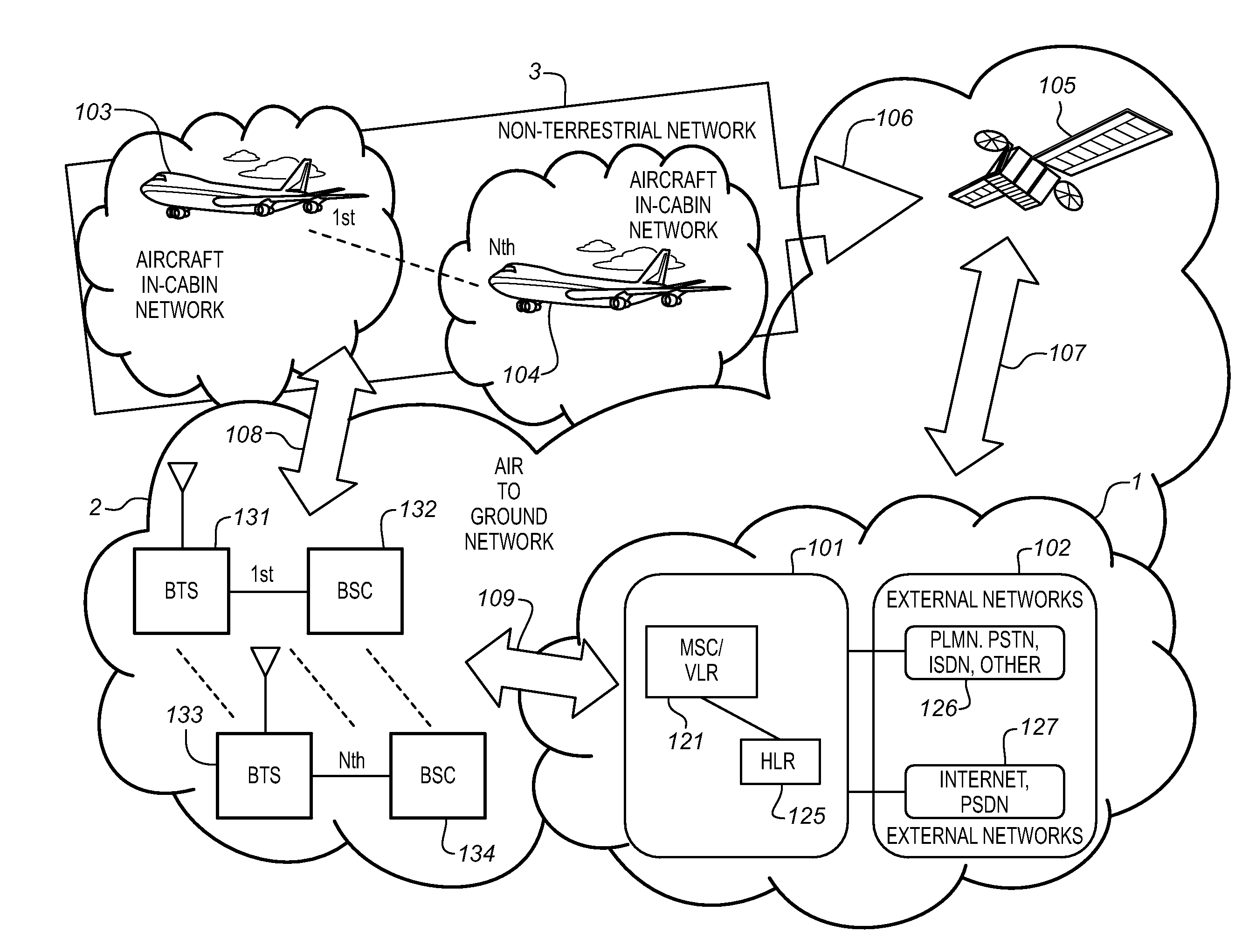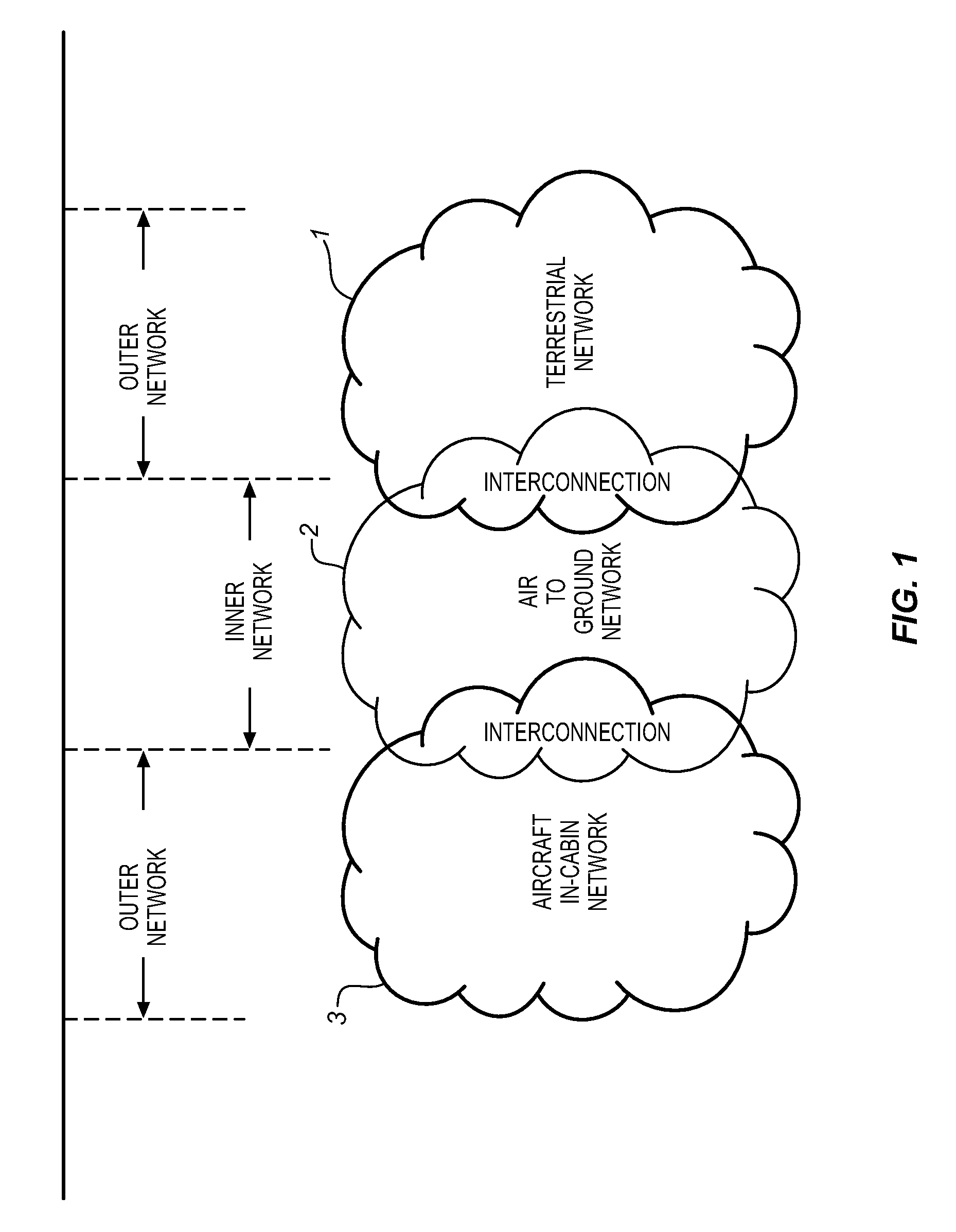System for providing high speed communications service in an airborne wireless cellular network
a high-speed communications and airborne technology, applied in the field of cell communication, can solve the problems of limited capacity of the communications network, limit the total available call handling capacity in any single cell, and limit the radio frequency communication link between the aircraft and the terrestrial base station, so as to increase the traffic handling capacity of data and voi
- Summary
- Abstract
- Description
- Claims
- Application Information
AI Technical Summary
Benefits of technology
Problems solved by technology
Method used
Image
Examples
Embodiment Construction
[0020]The terms “cell site” and “cell” are sometimes loosely used in the literature; and the term “cell site” generally denotes the locations of the Base Transceiver Stations, while the term “cell” generally denotes the region of space which is served by a particular set of transceivers and associated antenna system at a cell site. A “sector” generally refers to the sector-shaped coverage area created when multiple directional antenna systems are used at a cell site to provide greater capacity and / or coverage by subdividing the nominally circular coverage area surrounding a cell site into a corresponding number of cells. The particular technology used to implement the communications between wireless subscriber devices and the transmitter-receiver pairs, as well as the nature of the data transferred there between, be it voice, video, telemetry, computer data, and the like, are not limitations to the system which is described herein, since a novel system concept is disclosed rather th...
PUM
 Login to View More
Login to View More Abstract
Description
Claims
Application Information
 Login to View More
Login to View More - R&D
- Intellectual Property
- Life Sciences
- Materials
- Tech Scout
- Unparalleled Data Quality
- Higher Quality Content
- 60% Fewer Hallucinations
Browse by: Latest US Patents, China's latest patents, Technical Efficacy Thesaurus, Application Domain, Technology Topic, Popular Technical Reports.
© 2025 PatSnap. All rights reserved.Legal|Privacy policy|Modern Slavery Act Transparency Statement|Sitemap|About US| Contact US: help@patsnap.com



